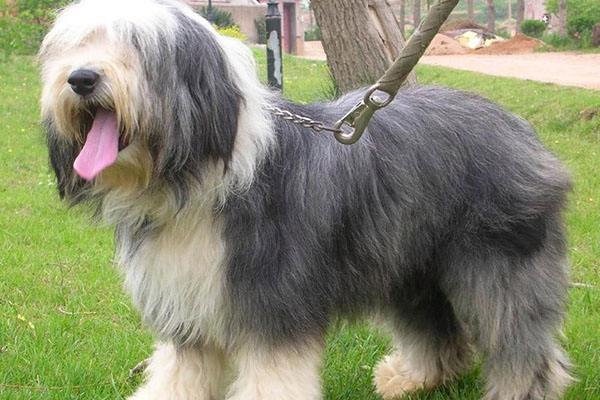Polish Lowland Sheepdog
IUCN
LCBasic Information
Scientific classification
- name:Polish Lowland Sheepdog
- Scientific Name:Boer Shepherd
- Outline:Carnivora
- Family:Canidae
Vital signs
- length:41-51cm
- Weight:14-15kg
- lifetime:13-15year
Feature
Since the Polish Lowland Dog and the Bearded Collie have the same ancestors, their appearance characteristics are basically the same, except that the Polish Lowland Dog is smaller in size.
Distribution and Habitat
Origin: Poland
Appearance
The hair on the forehead, cheeks and chin is extremely abundant, making the head appear larger than it actually is. The eyes are medium-sized and oval. The edges of the eyelids are the darker of the coat colors. The ears are heart-shaped, pendulous, and set somewhat high. They are in q with the head, of moderate size, and should be completely covered by the long hair. The skull is moderately broad and slightly globular. The forehead is wrinkled, and the back of the skull is distinct. There is a distinct depression in the stop, but it is not so pronounced as to give a round-headed breed. The jaws are strong. The teeth are a full set of strong white teeth, meeting in a scissor-like or horizontal bite. The nose is large, and is black or brown, depending on the color of the coat. The withers are distinct and wide. The chest is deep and wide. The loin is muscular and wide. The croup is slightly cut, but only to a very small extent. The belly is slightly pendulous. The tail is short, set low
Details
The Polish Lowland Sheepdog is a herding and guard dog that originated in the 16th century. It was originally used for gun hunting and was usually used as a companion dog and sheepdog. Its ability to herd and work is due to its strong desire and nature to please.

One of the ancestors of the Polish Lowland Sheepdog is the Hungarian Puli. Prior to the 16th century, these 19-22 inch tall long-haired lowland sheepdogs were used for herding and guarding. The dogs' appearance was a mix of Polish and Pomeranian characteristics of the time. It is said that in 1514, the Poles sailed into Scotland, exchanging rice for sheep and bringing six lowland sheepdogs to help them care for their flocks. The Scots exchanged a pair of breeding sheep for two female and one male Polish lowland sheepdogs, and these three dogs became one of the ancestors of the Scottish Bearded Collie. By World War II, the Lowland Sheepdog was said to have suffered a devastating disaster and was on the verge of extinction, but thanks to a Polish veterinarian, one of his male dogs and six females survived the catastrophe, allowing the breed to survive. The Polish Lowland Sheepdog was recognized by the American Kennel Club in 2001.
Breeders consider the Polish Lowland Sheepdog to be a cross between the cord-coated collies that were introduced to Europe more than 1,000 years ago and more recent coarse, shaggy-coated collies, such as the Scottish Bearded Collie and the Dutch Schnauzer. After World War II, diligent Polish breeders revived the breed. Although an excellent herding dog, the Polish Lowland Sheepdog is still popular as a family companion in Poland and elsewhere.
The Polish Lowland Sheepdog is active but restrained, intelligent, perceptive, and has an excellent memory. It is of medium size, hardy, and adapted to city life, requiring regular grooming and plenty of physical exercise. They try to win more attention from their owners in various ways. They are always happy, but they are wary and distrustful of strangers, and often use barking to warn strangers. If the Polish Lowland Sheepdog receives socialization training from an early age, this situation will change, and they can even get used to strangers around.
Protect wild animals and eliminate game.
Maintaining ecological balance is everyone's responsibility!








